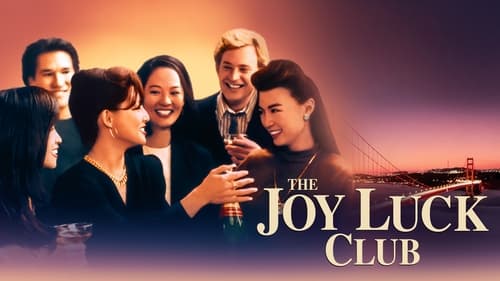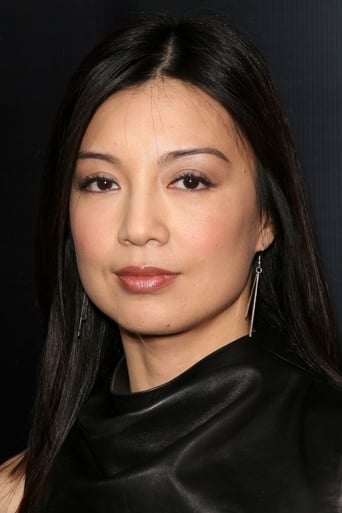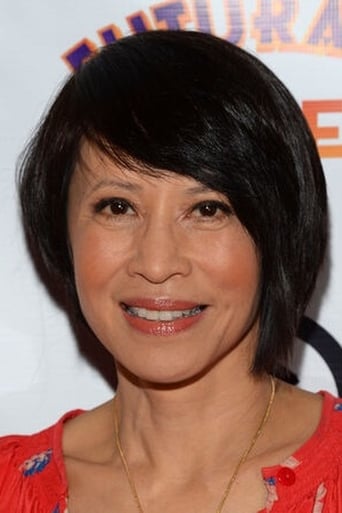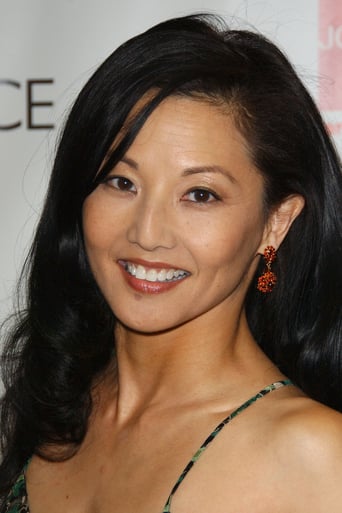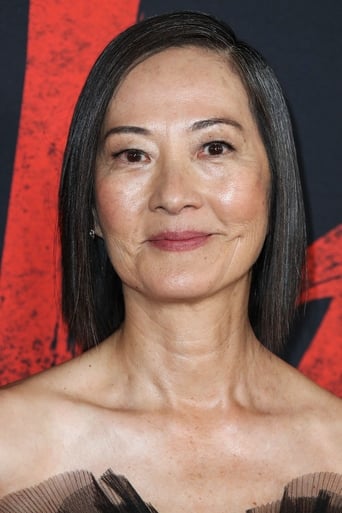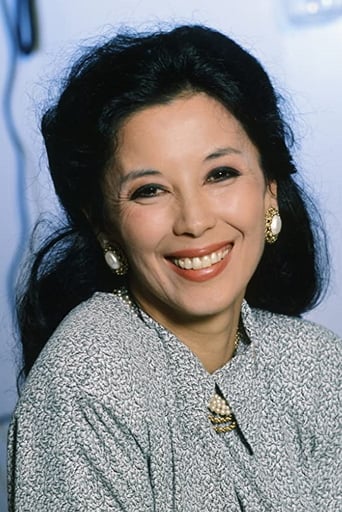BootDigest
Such a frustrating disappointment
Invaderbank
The film creates a perfect balance between action and depth of basic needs, in the midst of an infertile atmosphere.
Fleur
Actress is magnificent and exudes a hypnotic screen presence in this affecting drama.
SnoopyStyle
Four women from China formed the Joy Luck Club in San Francisco. One of them Suyuan Woo passes away leaving a secret in China for her daughter June. Suyuan had left two babies behind during the war. The others of the club have their own secrets which affect each of their daughters. Lindo was forced into an arranged marriage and her daughter Waverly Jong struggles for her approval. Ying-Ying had a womanizing husband and she does something horrific. She finds herself without soul to pass onto her daughter Lena who struggles without respect from her husband. An-Mei's mother was disowned by her family and forced to be the fourth wife of a brutal man. An-Mei's daughter Rose Hsu is married to Ted Jordan (Andrew McCarthy) but their marriage is floundering.This is a movie about and probably for mothers and daughters. The complicated relationships are touching. It is a lot and maybe too many stories. It leaves the movie with an anthology feel. Some of them are really compelling. These are interesting stories portrayed by actors who are rarely used as leads during 90's Hollywood.
John_Truby
The Joy Luck Club shows writers the commercial and critical success that is possible by using the structures and techniques of advanced screen writing. I have long argued that the old 3-act structure is too elementary for anyone wanting to write a mainstream Hollywood script that will actually sell. Trying to write an advanced film like The Joy Luck Club with it would be laughable.Here is a film that tells the story of eight women over the course of approximately sixty years. Does this film have three acts with plot twists on page 27 and page 87? Of course not. You could try to impose such a system - and I'm sure someone will - but what good would it do? The 3-act structure was never designed to help writers create a script. Its main use has been in demarcating a script after it's written.To see how this film is put together - and how you might write a film like it - we have to look at how the seven steps of every story interact with advanced structures.Every good story is founded on seven dramatic steps: problem/need, desire, opponent, plan, battle, self-revelation, and new equilibrium. Sure enough, the first thing we notice when exploring the structure of The Joy Luck Club is that each of the eight stories works through the seven steps.Clearly some of the stories in the film fulfill the seven steps better than others. In general I found the mothers' stories more compelling than the daughters'. That may be due in part to the nature of history and geography. The mothers' stories take place in a brutally patriarchal China that is going through vast social and political upheaval. As a result, the mothers' stories have an epic canvas, and the problems these women face are more tragic and profound.The daughters, on the other hand, face the problems of the affluent American, of what has also been called the "end of history." Without the burden of war, famine, and slavery, these "modern" women are free to concentrate on the psychological, on the painful bond between parent and child, or in these cases, mother and daughter.Indeed, the biggest flaw of the film for me is that the psychological needs and self-revelations of the daughters are virtually identical. Each woman feels inadequate in the face of her mother's expectations of her. And each learns, through the help of her mother, that she is a valuable and unique individual. I don't mean to diminish the importance of this problem or revelation. On the contrary, I was overjoyed to see such a powerful feminine perspective coming from a film industry that is so excessively masculine. But the sameness of the daughters' problems makes these parts of the film drag.To see the power of this film, we must go beyond a simple seven step breakdown of each of the eight stories. The trick to this film is the way these stories are tied together. And for this, we need to look at advanced structures.Unlike the linear seven or twenty-two step structure used by almost all Hollywood films to track a single main character, advanced films require specialized structures that can tie a number of characters and stories together into an organic whole. This is a complex subject; there are over 15 different advanced structures (see the Advanced Screen writing Class), and each serves a different thematic purpose.The Joy Luck Club uses a variation of the branching structure. In branching structures, the author sets up a main trunk, then takes the story out to a series of branches that can be organized in an infinite number of ways. The problem with branching structures is: how do you sequence the branches to avoid repetition and the sense that the story is stopping and starting all the time.The Joy Luck Club strategy is to center the story within a communal event where we can meet all the characters and return after each story to get anchored. The main trunk of the story is provided by the desire line of June. She wants to visit her long-lost sisters in China. This single line creates the reason for the communal event, returns again and again throughout the story, and gives the story the ending that not only completes June's story but thematically completes the stories of the other seven characters as well.To finish reading this review and to find others, please visit http://www.truby.com/im_jlc.html
BC
I'd read many books by Chinese, and Asian-American authors before, but though some of them touched something in me, I didn't really understand a lot of what they said. I knew I needed a better understanding of the cultural differences, but boy! what a gap!!!I've lived in Taiwan now for 5 years, and still have a lot to learn about the "inner fires and mysteries" that push and nudge these people to their choices. Choices I make, too but from a somewhat different outlook. So I caught the Joy Luck Club on the Starmovies channel... and laughed and sobbed, and felt so full I could burst and desolate, and loved, and neglected. All at once. Wow! What a ride! And for Pete's sake, I'm a 40-year old guy! (And no, I'm happily married!)I don't care that some posters are heartless enough to pare people down to "cliches" (ugly word, that.. yuck) in order to be able to make sense of the movie. It's their tough luck that they are missing out on the richness of life - a life that is portrayed so very well and so deeply by the smallest actions of the actors, and their words! A feather to you Amy Tan and Ronald Bass for some of the most stunning lines written for the screen!Go get the movie, folks.
writerasfilmcritic
If this flick can't make you cry, then you have no heart. I bought it for my wife a few years ago and we have watched it several times now. It's one of her faves. I think I can make reasonably critical remarks because I've been over the same territory so much. Let's get the criticism out of the way from the beginning. I have two main objections. One, this is a woman's movie that is unapologetically pro-female and seriously anti-male in character. When the men aren't being portrayed as egotistical, selfish, and cruel, they are annoying or clueless. It gets a bit tiresome. In fact, one is surprised that a couple of them make the cut over the long haul because these ladies don't think much of men, in general, that is, unless they are completely domesticated and worshipful. Second is Oliver Stone's unrelenting attack upon the viewer's emotional homeostasis. He comes at you again and again, dragging an emotional response out of you over and over without significant letup. In so doing, he goes over the top a bit, but most of the feeling generated is honest and genuinely acted. One definitely gets the sense that the Chinese (or at least this group of them) are very sentimental people, which doesn't quite jibe with their rather stern and inscrutable image in the world at large. One of my favorite scenes was the one at the beauty parlor between Auntie Lindo and her daughter Waverly, where Waverly confesses that even a look from her mother used to make her cry herself to sleep. Lindo's reaction to this otherwise troubling info was a simple, "Now you have made me happy." Then there's the scene in the kitchen after the dinner party between June and her Mom (who sad to say wasn't long for this world). That's where she tells June that for her she has, "only hope," assuring her that, "I see you." Both of these scenes are very touching. The finale, where June arrives in China to see her long lost half-sisters is a real tear-jerker, as well. Some of the scenes in this movie were rather troubling, however. At the top of the list would have to be the young Ying Ying's sacrifice of her infant son to "get back" at her selfish and cruel husband. He certainly deserved to be hurt, but to take it out on the baby boy? That I couldn't forgive her for. The same woman, in middle age, was understandably critical of her daughter's unbelievably cheap and pompous husband, but for her to judge him so harshly after the terrible thing she had done in her youth was hypocritical. An interesting sidelight is that this actress was the same young lady who played Leat, the beautiful native girl in the movie "South Pacific."Speaking of that, this flick was an exploration of the natural beauty of oriental women. Which one of them was the most alluring? It was quite a contest. I'd say the two most beautiful women in the cast (at least of the older generation) were the young Ying Ying and An Mei's mother, the lovely woman whom we first saw wearing a fashionable hat, who became a fourth wife and "didn't know her worth," and finally who committed suicide "for her daughter's sake." Less for their absolute beauty than their special appeal was Lindo's mother in China and June's mother in America. Among the daughters, it was a tossup. Probably either Waverly or Lena was the most attractive, but June had a sensuous quality and certainly gave them a run for the money. Rose, although somewhat less beautiful, was also appealing. You can't go wrong with "Joy Luck Club" if you appreciate the beauty of Chinese women. Just make sure you have something absorbent handy when you sit down to watch because you're going to need it.

